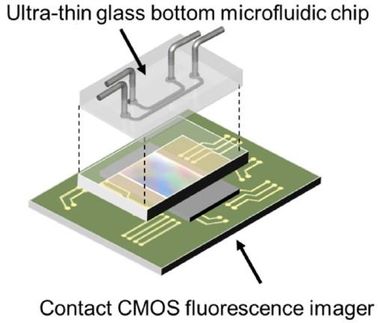Turning smart phones into microscopes
Australian scientists have invented a simple and cheap way of making a high-powered lens that can transform a smart phone into a high-resolution microscope.
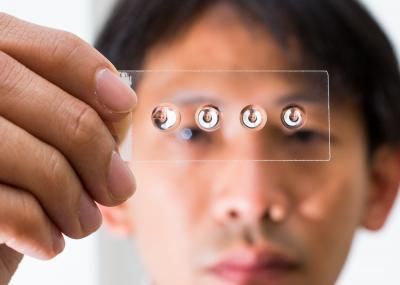
Dr. Steve Lee inspects PDMS droplet lenses on a slide.
Australian National University
Costing less than a cent, the lenses promise a revolution in science and medicine in developing countries and remote areas.
The lens fabrication technique was invented by Dr Steve Lee from The Australian National University (ANU) Research School of Engineering, who collaborated with Dr Tri Phan from Sydney's Garvan Institute of Medical Research to find ways to transform the lentil-sized lens into a medical imaging tool.
The lenses are made by using the natural shape of liquid droplets.
"We put a droplet of polymer onto a microscope cover slip and then invert it. Then we let gravity do the work, to pull it into the perfect curvature," Dr Lee said.
"By successively adding small amounts of fluid to the droplet, we discovered that we can reach a magnifying power of up to 160 times with an imaging resolution of four micrometers."
The polymer, polydimethylsiloxane (PDMS), is the same as that used for contact lenses, and it won't break or scratch.
"It would be perfect for the third world. All you need is a fine tipped tool, a cover slip, some polymer and an oven," Dr Lee said.
The first droplet lens was made by accident.
"I nearly threw them away. I happened to mention them to my colleague Tri Phan, and he got very excited," Dr Lee said.
"So then I decided to try to find the optimum shape, to see how far I could go. When I saw the first images of yeast cells I was like, 'Wow!'"
Dr Lee and his team worked with Dr Phan to design a lightweight 3D-printable frame to hold the lens, along with a couple of miniature LED lights for illumination, and a coin battery.
The technology taps into the current citizen science revolution, which is rapidly transforming owners of smart phones into potential scientists. There are also exciting possibilities for remote medical diagnosis.
Dr Phan said the tiny microscope has a wide range of potential uses, particularly if coupled with the right smartphone apps.
"This is a whole new era of miniaturisation and portability - image analysis software could instantly transform most smartphones into sophisticated mobile laboratories," Dr Phan said.
"I am most able to see the potential for this device in the practice of medicine, although I am sure specialists in other fields will immediately see its value for them."
Dr Lee said the low-cost lens had already attracted interest from a German group interested in using disposable lenses for tele-dermatology.
"There are also possibilities for farmers," he said. "They can photograph fungus or insects on their crops, upload the pictures to the internet where a specialist can identify if they are a problem or not."
Organizations
Other news from the department science
These products might interest you
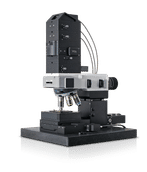
alpha300 R by WITec
3D Raman microscopes with unequalled speed, sensitivity and resolution
Visualize and characterize every chemical detail
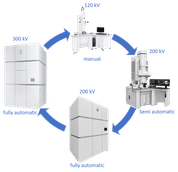
JEOL CRYO ARM by JEOL
Cryo-TEM: Fast and stable data acquisition for biosamples
Increased efficiency in structural biology with automated sample loading system
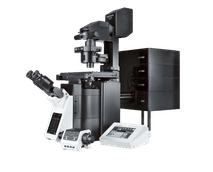
FLUOVIEW FV4000 by EVIDENT
Revolutionary imaging with FLUOVIEW FV4000: Confocal laser scanning
Utilise AI-powered image processing and innovative detector technology

Get the life science industry in your inbox
By submitting this form you agree that LUMITOS AG will send you the newsletter(s) selected above by email. Your data will not be passed on to third parties. Your data will be stored and processed in accordance with our data protection regulations. LUMITOS may contact you by email for the purpose of advertising or market and opinion surveys. You can revoke your consent at any time without giving reasons to LUMITOS AG, Ernst-Augustin-Str. 2, 12489 Berlin, Germany or by e-mail at revoke@lumitos.com with effect for the future. In addition, each email contains a link to unsubscribe from the corresponding newsletter.
Most read news
More news from our other portals
Last viewed contents
Blocking neuroblastoma cell growth - An inhibitor of cell metabolism may be a good therapeutic target for neuroblastoma
Cangene's VIG (Vaccinia Immune Globulin Intravenous) contract with U.S. government extended for another five years

